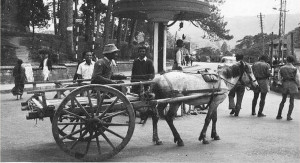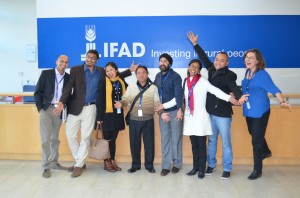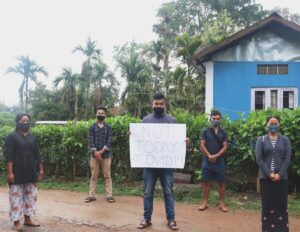Unprecedented levels of chronic non-communicable diseases are prompting calls to revert to the diets of our ancestors to regain lost nutrients.
It is believed that such a shift would help to improve society’s relationship with the Earth and restore human and environmental health.
“The rise of the industrial model of agriculture has contributed greatly to people being disconnected from the food on their plates,” says Sarah Somian, a France-based nutritionist.
Many traditional and non-processed foods consumed by rural communities, such as millet and caribou, are nutrient-dense and offer healthy fatty acids, micronutrients and cleansing properties widely lacking in diets popular in high- and middle-income countries, say experts.
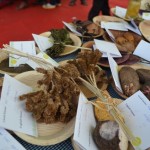
Indigenous diets worldwide – from forest foods such as roots and tubers in regions of eastern India to coldwater fish, caribou and seals in northern Canada – are varied, suited to local environments, and can counter malnutrition and disease.
“For many tribal and indigenous peoples, their food systems are complex, self-sufficient and deliver a very broad-based, nutritionally diverse diet,” says Jo Woodman, a senior researcher and campaigner at Survival International, a UK-based indigenous advocacy organisation.
But the disruption of traditional lifestyles due to environmental degradation, and the introduction of processed foods, refined fats and oils, and simple carbohydrates, contributes to worsening health in indigenous populations, and a decline in the production of nutrient-rich foodstuffs that could benefit all communities.
“Traditional food systems need to be documented so that policymakers know what is at stake by ruining an ecosystem, not only for the indigenous peoples living there, but for everyone,” Harriet Kuhnlein, founding director of the Centre of Indigenous Peoples’ Nutrition and Environment at McGill University, Canada.
Since the early 1960s, economic growth, urbanisation and a global population increase to more than 7 billion have multiplied the consumption of animal-sourced foods – including meat, eggs and dairy products – which comprised 13% of the energy in the world’s diet in 2013, according to the International Livestock Research Institute (ILRI) in Nairobi, Kenya. Farm-raised livestock consumes up to a third of the world’s grains, the institute notes.
Agricultural expansion, some of it to cultivate more grains, accounts for 80% of the world’s deforestation, says the UN Environmental Programme.
With the global population expected to rise to some 9 billion by 2050, 50% more food must be produced to feed these people, depending on whether there is a healthy ecosystem. “When environments are destroyed or contaminated, this affects the food they can provide,” Kuhnlein says.
Indigenous food systems – gathering and preparing food to maximise the nutrients an environment can provide – range from nomadic hunter-gatherers such as the Aché in eastern Paraguay, the Massai pastoralists in northern Kenya, and herding and fishing groups including the Inuit in northern Canada, to the Saami of Scandinavia and the millet-farming Kondh agriculturalists in eastern India.
But the trait these groups share is a keen knowledge of how to eat nutritiously without damaging the ecosystem. “Indigenous peoples’ food systems contain treasures of knowledge from long-evolved cultures and patterns of living in local ecosystems,” says an FAO-supported study on indigenous food systems, nutrition, and health co-authored by Kuhnlein in 2009.
In recent years, grains such as quinoa, fonio and millet – long harvested by indigenous and rural communities in developing countries but increasingly overlooked by a younger, richer generation that prefers imported foods – have instead grown in popularity in developed countries.
Research, marketing and donor-funded financing have helped raise awareness of the ability of these high-protein grains to reduce cholesterol, provide micronutrients and lower the risk of diabetes. “Because of the many health benefits of these forgotten, or until [recently] unknown foods, valuing the wisdom of indigenous cultures [and] earlier generations is vital for reducing disease and inflammation,” Somian says.
The Kondh community in Odisha state traditionally grows up to 16 varieties of millet, according to Debjeet Sarangi, head of Living Farms, a local NGO that has worked with marginalised indigenous farmers since 2005.
But millet-growing among the roughly 100,000 Kondh, who are spread over about 15,000 villages, has dropped by nearly 63% from an estimated 500,000 hectares in 1975 to more than 200,000 hectares in 2008. This is because land is being converted to paddy in exchange for government-subsidised rice programmes offering refined white rice, even though it carries health risks.
“When there is so much malnutrition existing in the area, why do you replace land which has been growing nutritious food [with rice paddies]?” says Sarangi, whose NGO reported in 2011 that 75% of under-fives in Kondh weighed too little for their age, and 55% were too short for their height group, a sign of chronic malnutrition.
Another so-called superfood declining in popularity is spirulina, a type of cyanobacteria that grows in ponds and is a staple in many traditional food systems, such as among the Kanembu in Chad.
Spirulina has the potential to boost immunity, reduce inflammation, decrease allergic reactions, and provide a healthy source of protein, according to the Langone Medical Centre of New York University in the US.
“There is a deep irony in the fact that many dieticians are advocating [traditional and indigenous foods and diets] and yet [the] modern [western] diet is what is being pushed on tribal peoples around the world, with devastating results,” Woodman says.
“We have lost our primary relationship with our world around us,” says Dr Martin Reinhardt, assistant professor of Native American studies at Northern Michigan University.
Native American elders historically planned seven generations ahead when creating food systems, teaching each generation that it was their responsibility to ensure the survival of the seventh, says Reinhardt, an Anishinaabe Ojibway citizen of the Sault Ste. Marie Chippewa Native American people in Michigan state. They did this by hunting and gathering only what they needed, conserving resources such as wood and water, and protecting food biodiversity.
But when Native Americans were forced to assimilate, historical access to this nutritional knowledge was lost, Reinhardt points out. According to the special diabetes programme for Indians, run by the US federal government’s Indian health service , the 566 registered indigenous peoples in the US have a diabetes rate nine times higher than the national average.
Similarly, rates of the disease among First Nations and Inuit groups in Canada are up to five times higher than the countrywide average, according to the government’s federal health department.
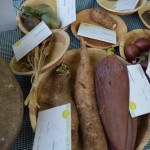
In Laos, northern highland minorities such as the Yawa, Htin and Khmu traditionally eat forest-based diets, including wild pigs, birds, bamboo shoots, banana flowers and yams rich in vitamin C. But in recent decades the Laos government has moved thousands of people from the highlands to towns for economic reasons, documented in a 2012 report by the International Fund for Agricultural Development.
“Communities [have less access] to natural resources than before,” says Jim Chamberlain, an anthropologist and former World Bank consultant based in the capital, Vientiane. He says their traditional diet relies on forests and the move has led to a decline in nutritional status. Malnutrition rates in Laotian under-fives are among the highest in south-east Asia.
While reinstating traditional food systems is key for everyone’s health, as well as for the environment, the lack of a market to support superfoods poses serious challenges, advocates say.
In northern Canada, many of the fishes rich in omega-3 fatty acids – a staple in the traditional diets of Arctic tribes – spawn and live in waters increasingly tainted with mercury, according to the government.
Deforestation worldwide, often to make way for large-scale agricultural production, curtails the nutrients that can be gathered from forests.
Much environmental destruction is a consequence of modern society’s detachment from its food systems, says Reinhardt, who co-ordinated a UNM project called decolonise your diet, which ran from 2010-12 and aimed to teach people the link between food, culture, health and the environment.
“Humans can, and need to, reconnect with nature in such an intimate way as to depend on it for survival,” he says. “I hope we have not yet passed the thresholds [of what the earth can tolerate].”
(The article appeared in theguardian.com Monday 3 February 2014 12.02 GMT –
http://www.theguardian.com/global-development/2014/feb/03/indigenous-diets-fight-modern-illnesses)


